Imagine stepping into your garden on a sunny morning, with vibrant butterflies flitting gracefully from bloom to bloom. Whether you’re a novice gardener just digging your first bed or a seasoned horticulturist looking to expand your repertoire, creating a butterfly garden can transform your outdoor space into a lively haven of biodiversity. This delightful endeavor not only enhances your garden’s aesthetic appeal but also supports local ecosystems by providing essential habitats for these enchanting pollinators.
In this article, you’ll discover the key steps to crafting your very own butterfly garden, from choosing the right plants to creating a welcoming environment. We’ll guide you through selecting nectar-rich flowers that attract a variety of butterfly species and share tips on maintaining a garden that thrives with life and color. Each section is designed to equip you with practical knowledge, ensuring that your garden becomes a cherished sanctuary for butterflies and a source of joy for you. By the end, you’ll be ready to welcome these winged wonders into your garden, knowing you’ve created a beautiful, sustainable space.
Select a Sunny Location
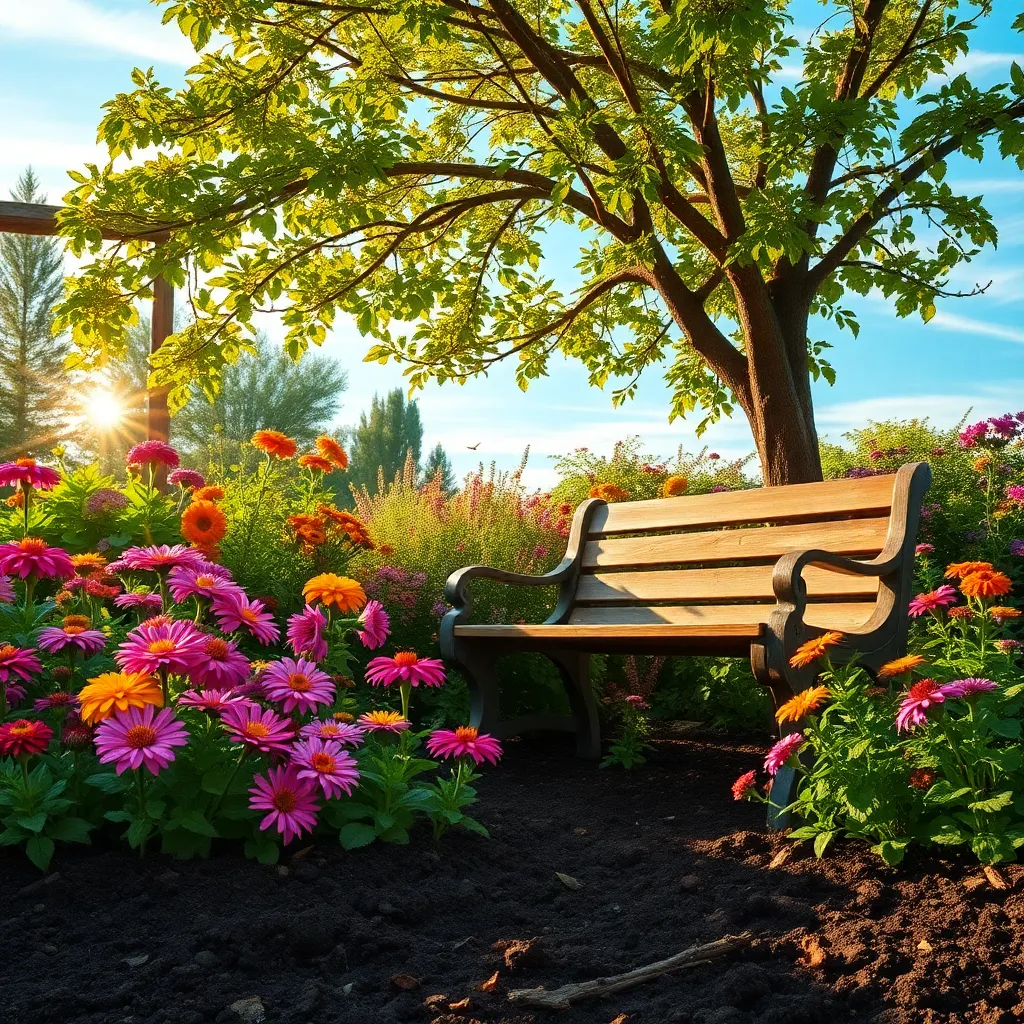
Choosing a location with ample sunlight is crucial for a successful butterfly garden. Most butterfly-attracting plants require at least six to eight hours of sunlight daily to thrive and produce vibrant blooms.
Ensure that the chosen area is not overshadowed by buildings or large trees, which can block essential sunlight. If your garden is in a partly shaded area, opt for plants that tolerate partial shade, like ferns and woodland phlox, but remember that fewer butterflies may visit.
Soil quality also plays a vital role in the health of your butterfly garden. Aim for well-draining soil enriched with organic matter, such as compost or peat moss, to provide necessary nutrients and prevent waterlogging.
Beginner gardeners should test their soil’s pH level to ensure it’s between 6.0 and 7.0, which is ideal for most flowering plants. For more advanced gardeners, consider employing a raised bed to control soil conditions better and facilitate drainage.
Plant Nectar-Rich Flowers
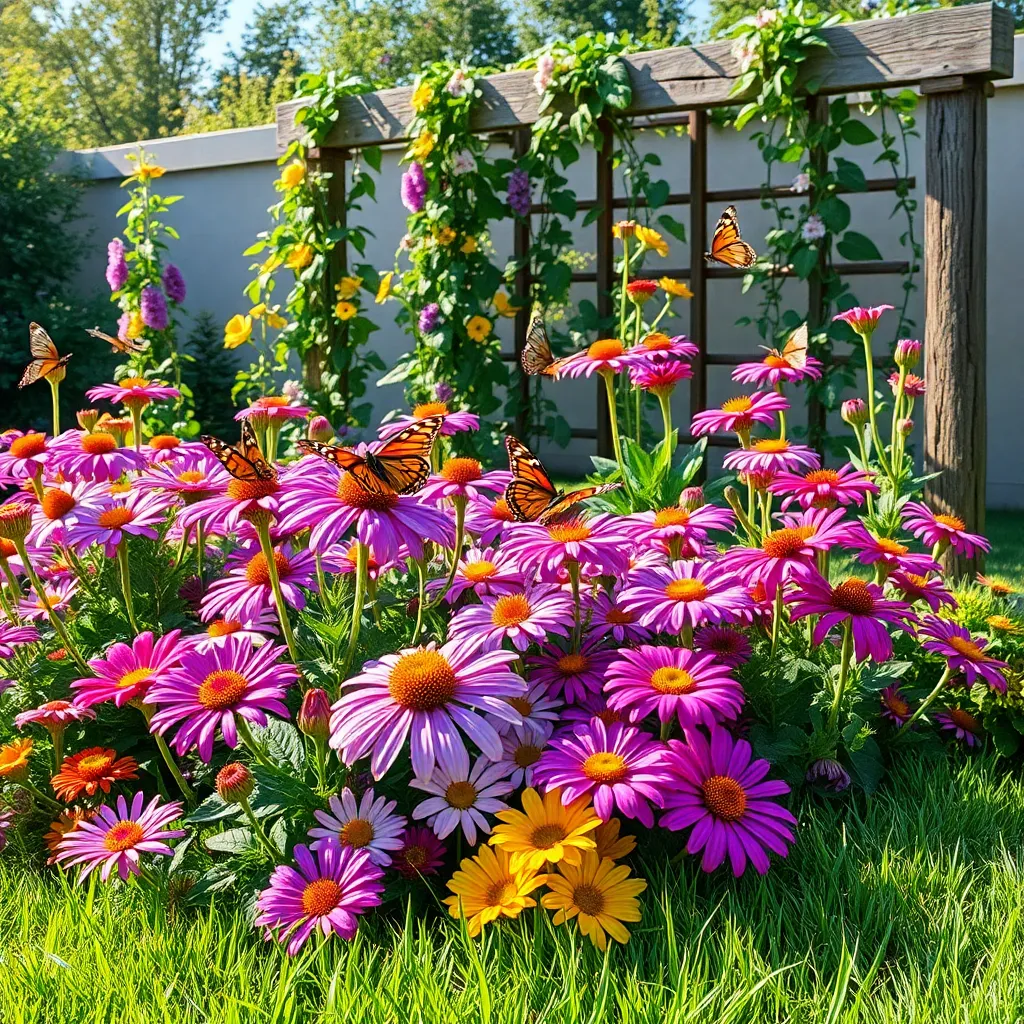
Choosing nectar-rich flowers is essential for attracting butterflies to your garden. Butterflies are drawn to vibrant blooms, so consider planting a mix of perennial and annual flowers to provide continuous nectar sources throughout the growing season.
Consider adding butterfly favorites like butterfly bush (Buddleja), coneflowers (Echinacea), and lantana. These plants not only provide abundant nectar but also thrive in well-drained soil and require full sun, making them perfect companions for your sunny location.
It’s beneficial to plant flowers in clusters, as butterflies are more likely to visit areas with concentrated blooms. Aim to include a variety of colors and shapes to cater to different butterfly species, ensuring your garden is a vibrant, welcoming habitat.
For those with more gardening experience, try incorporating native wildflowers, as they are naturally more adapted to your local climate and soil. Examples include milkweed (Asclepias) and bee balm (Monarda), both of which are known to attract diverse butterfly populations.
Incorporate Host Plants
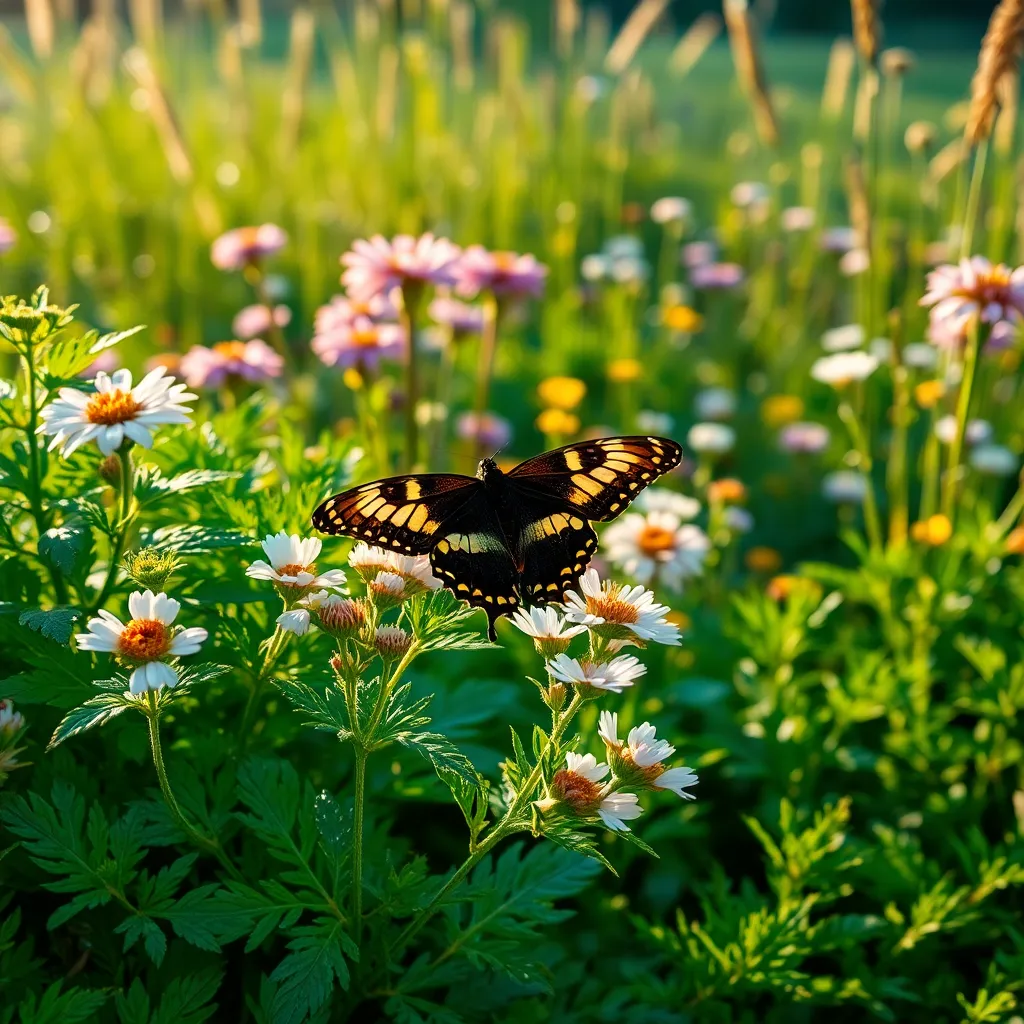
To create a thriving butterfly garden, it’s essential to incorporate host plants that cater to the life cycle of butterflies. These plants provide a crucial habitat for butterflies to lay their eggs and for caterpillars to feed, ensuring a thriving population in your garden.
Consider planting a variety of host plants to attract different butterfly species. For instance, milkweed is a fantastic choice as it supports monarch butterflies, while parsley and dill are perfect for swallowtails.
Host plants need specific growing conditions to thrive and support caterpillars effectively. Most require well-drained soil and a sunny location, which helps maintain healthy growth and maximizes caterpillar survival rates.
It’s beneficial to research the specific host plants that cater to the butterflies in your area. By doing so, you can select plants that are well-suited to your local climate, increasing the likelihood of attracting these beautiful insects.
Provide Water Sources
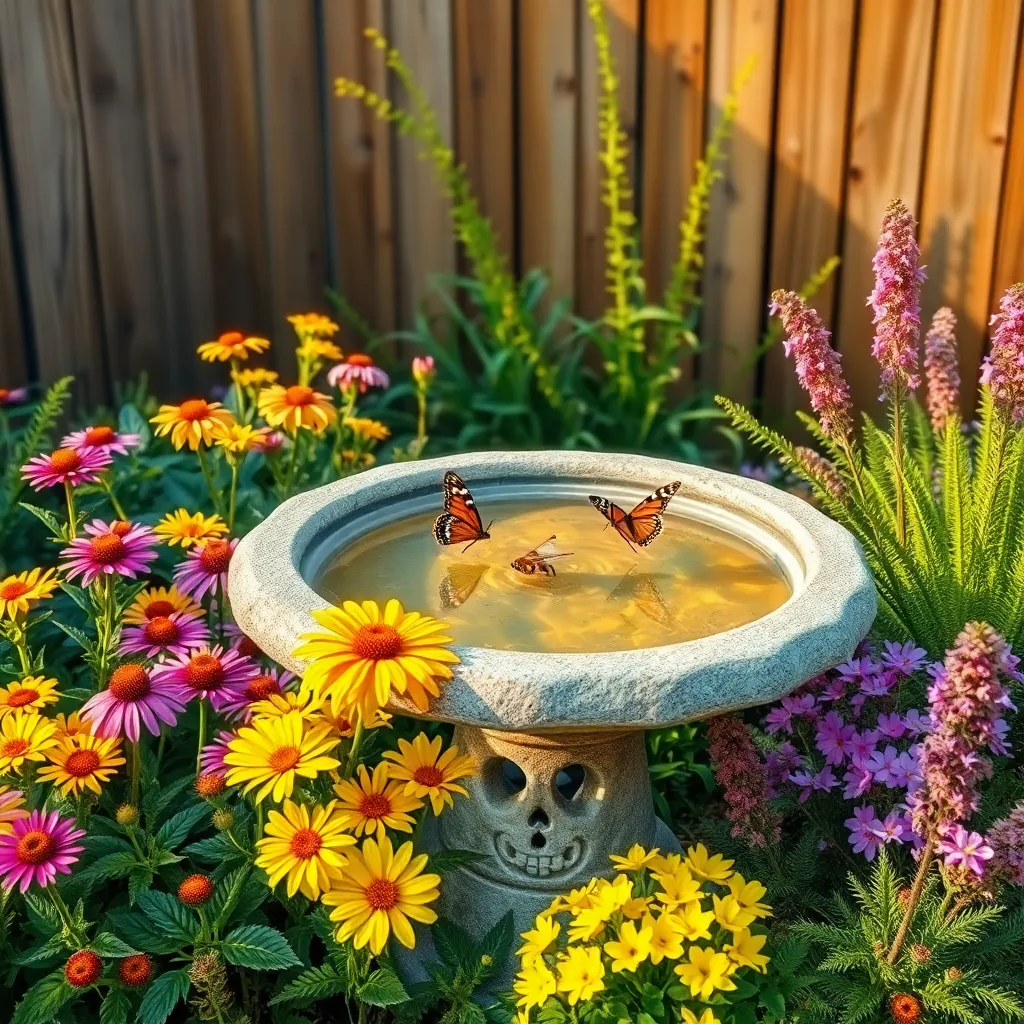
Providing water sources in your butterfly garden is crucial for attracting these delicate creatures. Butterflies are drawn to shallow water sources where they can safely drink without the risk of drowning.
One simple way to create a butterfly-friendly water feature is to use a shallow dish or birdbath filled with sand and water. Ensure the water just covers the sand, allowing butterflies to perch and sip without getting their wings wet.
Incorporate natural stones or pebbles in your watering feature to give butterflies a place to rest. These stones should protrude above the water surface, creating landing spots for butterflies to pause and drink.
If you want to enhance your garden further, consider adding a ‘puddling’ area by mixing soil with water to create a mud patch. This not only provides water but also essential nutrients and minerals that butterflies need for reproduction.
Create Shelter with Shrubs
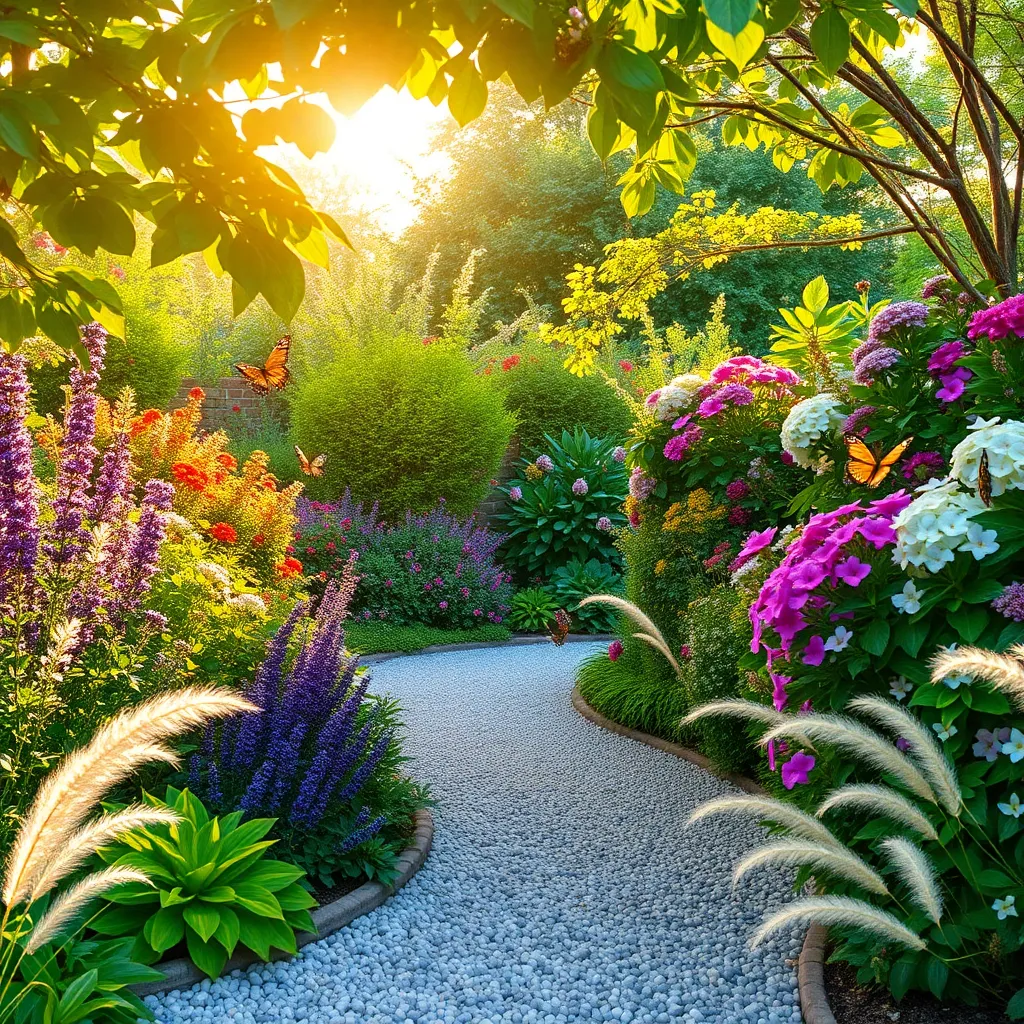
Creating shelter with shrubs is essential for attracting butterflies, as it provides them with protection from wind and predators. Select a mix of evergreen and deciduous shrubs to offer year-round shelter and habitat diversity.
Consider planting dense shrubs like Spirea or Viburnum, which offer excellent cover and seasonal blooms that attract butterflies. These shrubs prefer well-drained soil and full to partial sun, making them versatile additions to many garden types.
For a more advanced approach, strategically layer your shrubs to create a natural windbreak that reduces the impact of harsh weather. Plant taller shrubs like Holly at the back, with medium-sized ones like Boxwood in front to create a tiered effect.
Regular pruning is vital to maintain the health and shape of your shrubs, ensuring they continue to provide effective shelter. Water deeply once a week, especially during dry spells, to keep your shrubs thriving and robust.
Conclusion: Growing Success with These Plants
In creating a butterfly garden, we explored five essential relationship concepts that beautifully parallel the nurturing of human connections. First, we discussed the importance of understanding your partner’s unique needs and preferences, just like selecting the right plants for your garden. We then highlighted the significance of creating a supportive environment, akin to preparing nourishing soil that encourages growth. Communication emerged as crucial, mirroring the ongoing care and attention required to maintain a thriving garden. We also touched on the value of patience and persistence in relationships, much like waiting for butterflies to arrive. Lastly, we emphasized celebrating small milestones, akin to enjoying the first flutter of wings.
As your actionable next step, take a moment today to share one heartfelt compliment with your partner, acknowledging their unique qualities. This small gesture can spark a wave of positivity and connection.
Bookmark this article now to revisit these nurturing strategies whenever you need a reminder. Remember, just as a garden flourishes with care, your relationships can thrive with consistent effort and love. Looking ahead, know that by investing in these steps, you’re paving the way for enduring relationship success filled with beauty and growth.

